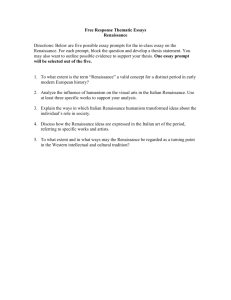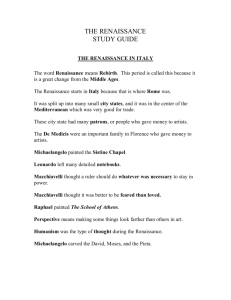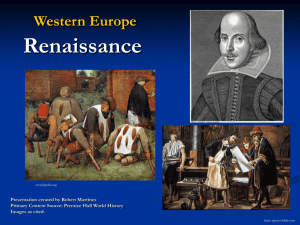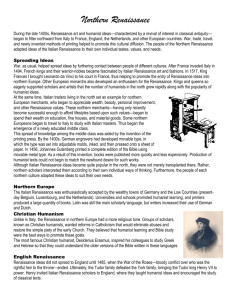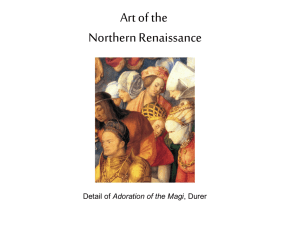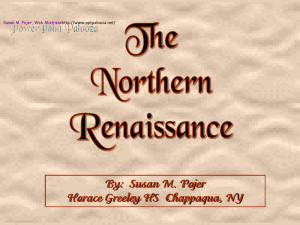Humanism Reform and Renaissance part 5
advertisement
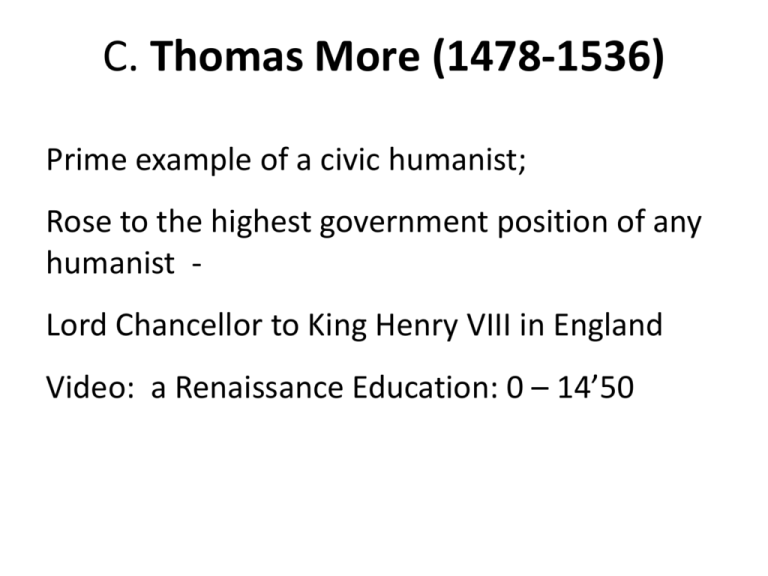
C. Thomas More (1478-1536) Prime example of a civic humanist; Rose to the highest government position of any humanist Lord Chancellor to King Henry VIII in England Video: a Renaissance Education: 0 – 14’50 Holbein’s portrait of Thomas More 2. Utopia (1516): More’s humanistic masterpiece a. Mixes civic humanism with religious ideals to describe a perfect (utopian) society located on an imaginary island b. More sees the accumulation of property as a root cause for society’s ills; a few have it—most don’t. c. In order to achieve harmony and order people have to be willing to sacrifice their individual rights for the common good. d. War, poverty, religious intolerance, and other problems of the early 16th century do not exist. D. Jacques Lefevre d’Etables (14541536) 1. Leading French humanist focused on early Church writings. 2. Wrote 5 versions of the Psalms challenged a single authoritative version of the Bible devout Catholic later seen as an enemy of the E. François Rabelais (1494-1553) 1. His secular writings portrayed his confidence in human nature and reflected Renaissance tastes 2. Gargantua (1534) and Pantagruel (1532) a. Folk epics and comic masterpieces that satirized French society b. Attacked clerical education and monastic orders; championed secular learning F. Michel de Montaigne (1533-1592) 1. Developed the essay form The essay became a vehicle for testing new ideas 2. Skepticism a. Doubt that true knowledge could be obtained b. Believed that the skeptic must be cautious, critical and suspend judgment. c. Thus, one must be tolerant of others’ G. William Shakespeare (1564-1616) – Elizabethan era 1. Greatest of the English Renaissance authors 2. His works reflected the Renaissance ideas of classical Greek and Roman culture, individualism and humanism 3. Wrote comedies, tragedies, histories and sonnets Video: Renaissance Education 53’24-57’ George Gower, Portrait of Elizabeth 1, c. 1588 Video: A Renaissance Education: 48’ – 52’45 VI. Northern Renaissance Art Peter Brueghel the Elder, Hunters in the Snow (Winter) 1565 A. Flemish style: the Low Countries produced especially important artists 1. Characteristics a. Heavily influenced by the Italian Renaissance b. More detail throughout paintings (especially the background) than the Italian Renaissance c. Use of oil paints (in contrast to Italian Renaissance that used tempera) d. More emotional than the Italian style e. Works often preoccupied with death The Tower of Babel by Pieter Bruegel the Elder 1563 Allegory: “The blind leading the blind” Pieter Bruegel the Elder 1568 2. Jan Van Eyck – (c. 1339- c. 1441) • • • a. Most famous and innovative Flemish painter of the 15th century b. Perfected oil painting c. Naturalistic wood panel paintings used much religious symbolism. • d. Employed incredible detail in his works • e. Masterpiece: Ghent Altarpiece (1432) • f. Arnolfini and his Wife (1434) is perhaps his most famous work. Van Eyck, The Arnofini Portrait, 1434, National Gallery, London


